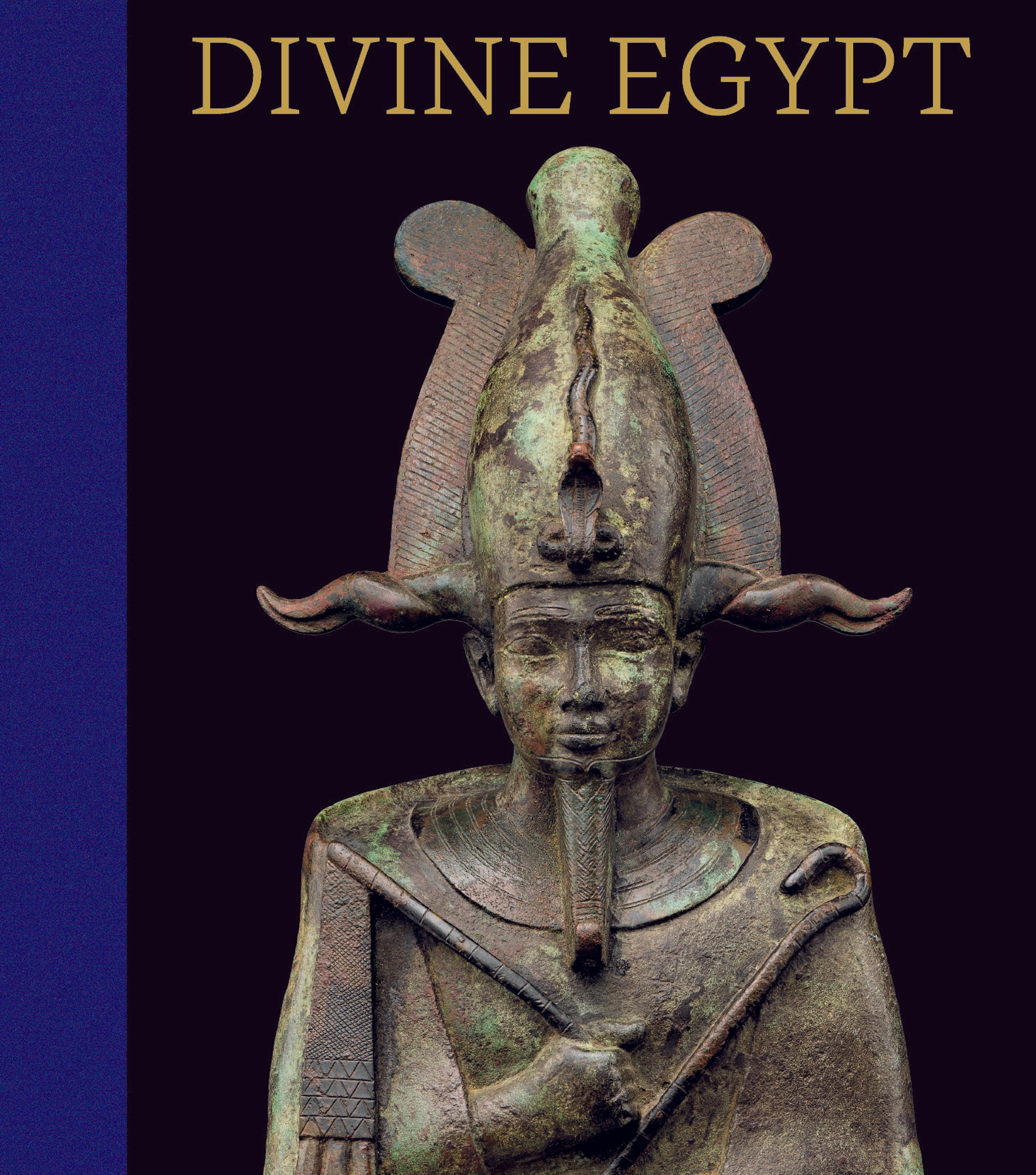Statue of a kneeling Kushite king
Kushite kings wore distinctive regalia, including a cap crown, double uraei, and ram's-head amulets. On this kneeling king, the double uraei have been "corrected" to one, while the ram's-head amulets on the necklace and the king's name on his belt have been hammered out by a later Saite king. The cap crown with a falcon engraved in the back, the bandeau with streamers, and the diadem with many tiny uraei were left untouched.
The small bronze kneeling figure represents two aspects of Kushite Period art that are intensifications of tendencies already extant in the Third Intermediate Period. Provision of small bronze royal attendant statuary demonstrated an specially pious regard for the gods and their temples. And, stylistically, there was an inclination toward models from the past, particularly the Old Kingdom, a taste clearly visible in the broad shoulders and narrow waist of the small bronze.
The large gold ram's-head amulet 1989.281.98 is an actual example of the type that was worn on this king's neck cord.
The small bronze kneeling figure represents two aspects of Kushite Period art that are intensifications of tendencies already extant in the Third Intermediate Period. Provision of small bronze royal attendant statuary demonstrated an specially pious regard for the gods and their temples. And, stylistically, there was an inclination toward models from the past, particularly the Old Kingdom, a taste clearly visible in the broad shoulders and narrow waist of the small bronze.
The large gold ram's-head amulet 1989.281.98 is an actual example of the type that was worn on this king's neck cord.
Artwork Details
- Title: Statue of a kneeling Kushite king
- Period: Third Intermediate Period, Kushite Period
- Dynasty: Dynasty 25
- Date: ca. 733–664 BCE
- Geography: From Egypt and Sudan, Nubia
- Medium: Bronze; gold leaf
- Dimensions: H. 7.3 × W. 3.2 × D. 3.7 cm (2 7/8 × 1 1/4 × 1 7/16 in.)
- Credit Line: Purchase, Lila Acheson Wallace Gift and Anne and John V. Hansen Egyptian Purchase Fund, 2002
- Object Number: 2002.8
- Curatorial Department: Egyptian Art
More Artwork
Research Resources
The Met provides unparalleled resources for research and welcomes an international community of students and scholars. The Met's Open Access API is where creators and researchers can connect to the The Met collection. Open Access data and public domain images are available for unrestricted commercial and noncommercial use without permission or fee.
To request images under copyright and other restrictions, please use this Image Request form.
Feedback
We continue to research and examine historical and cultural context for objects in The Met collection. If you have comments or questions about this object record, please contact us using the form below. The Museum looks forward to receiving your comments.
